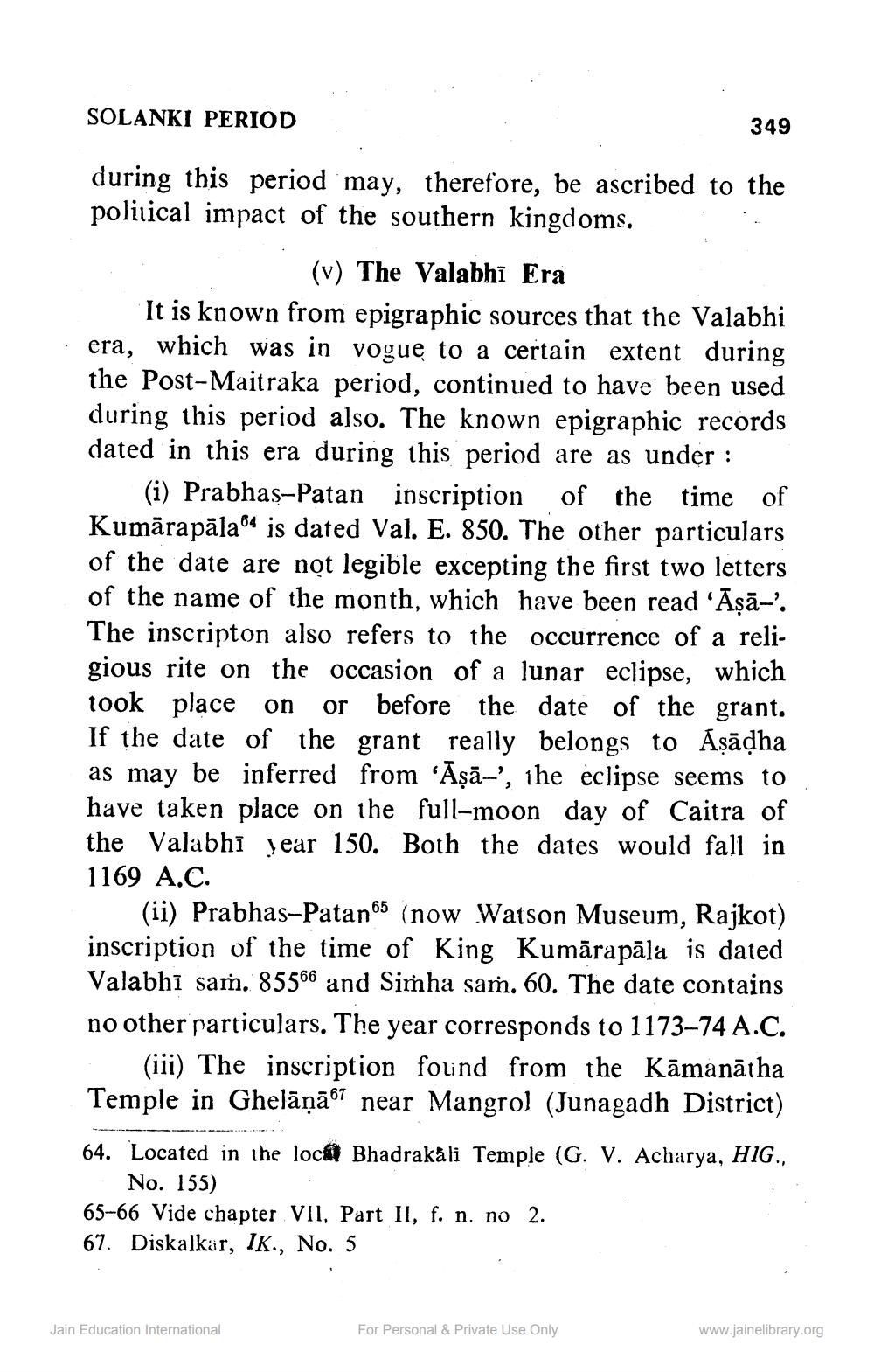________________
SOLANKI PERIOD
349
during this period may, therefore, be ascribed to the political impact of the southern kingdoms.
(v) The Valabhī Era It is known from epigraphic sources that the Valabhi era, which was in vogue to a certain extent during the Post-Maitraka period, continued to have been used during this period also. The known epigraphic records dated in this era during this period are as under :
(i) Prabhas-Patan inscription of the time of Kumārapāla 4 is dated Val. E. 850. The other particulars of the date are not legible excepting the first two letters of the name of the month, which have been read 'Aşām. The inscripton also refers to the occurrence of a religious rite on the occasion of a lunar eclipse, which took place on or before the date of the grant. If the date of the grant really belongs to Aşādha as may be inferred from 'Āṣā-?, the eclipse seems to have taken place on the full-moon day of Caitra of the Valabhī year 150. Both the dates would fall in 1169 A.C.
(ii) Prabhas-Patan 65 (now Watson Museum, Rajkot) inscription of the time of King Kumārapāla is dated Valabhi saṁ. 85566 and Simha saṁ. 60. The date contains no other particulars. The year corresponds to 1173–74 A.C.
(iii) The inscription found from the Kāmanātha Temple in Ghelāņā67 near Mangrol (Junagadh District) 64. Located in the loca Bhadrakäli Temple (G. V. Acharya, HiG.,
No. 155) 65-66 Vide chapter VII, Part II, f. n. no 2. 67. Diskalkur, IK., No. 5
Jain Education International
For Personal & Private Use Only
www.jainelibrary.org




